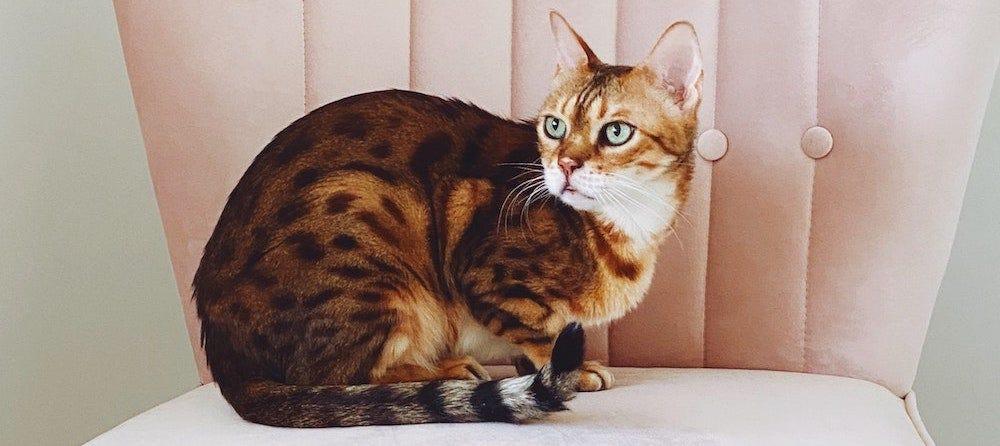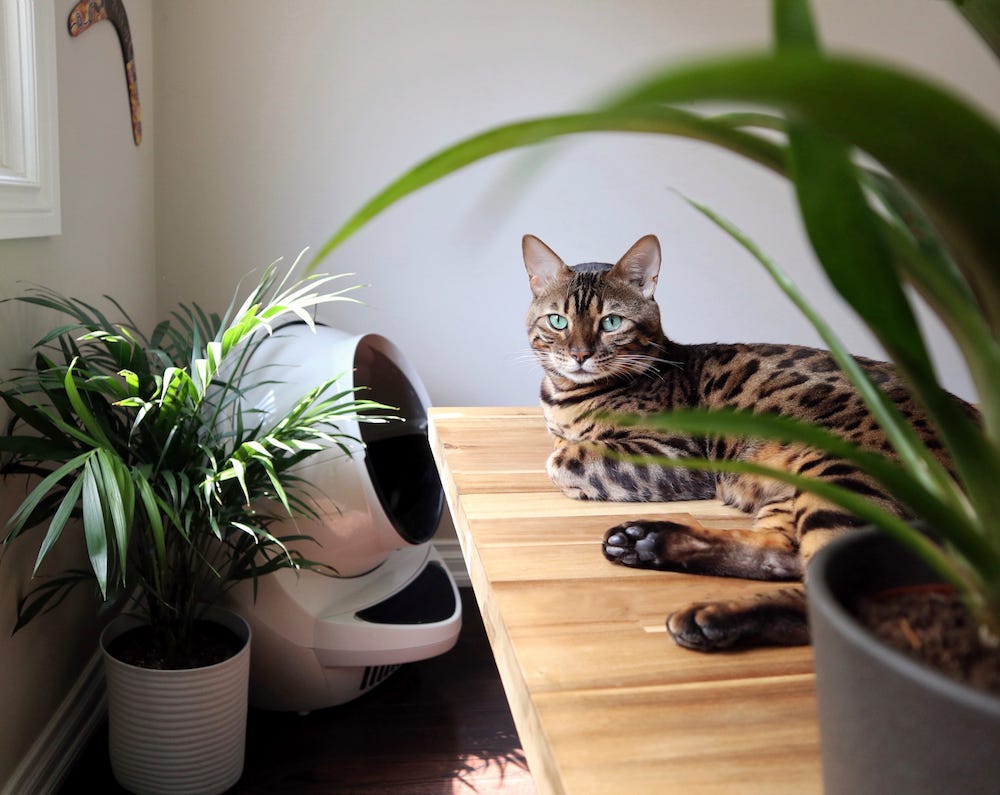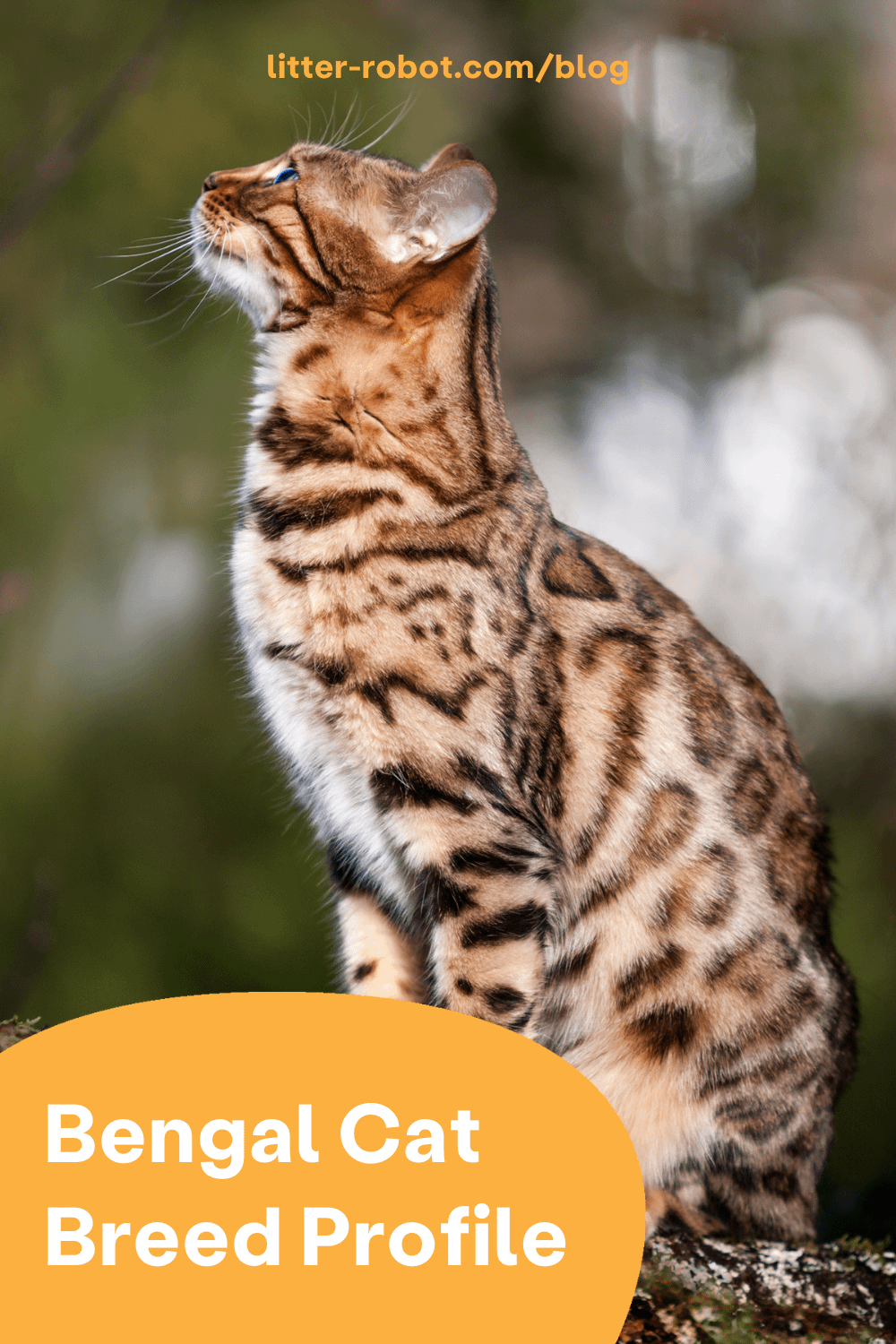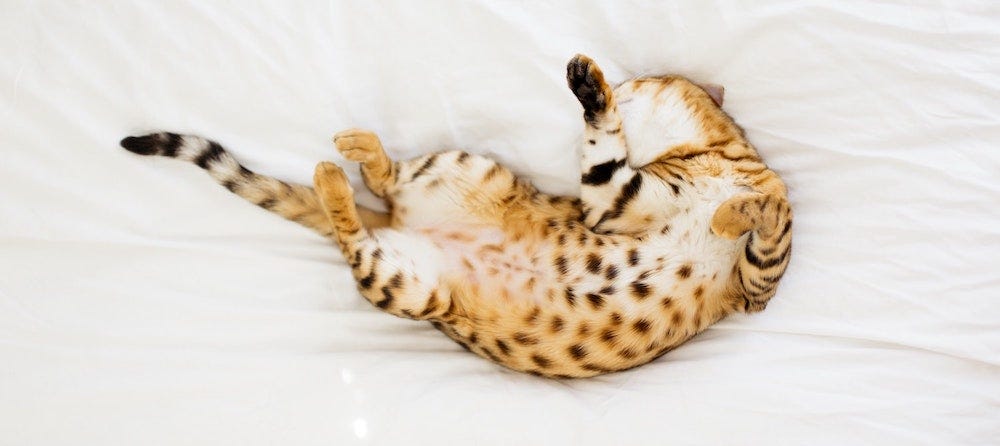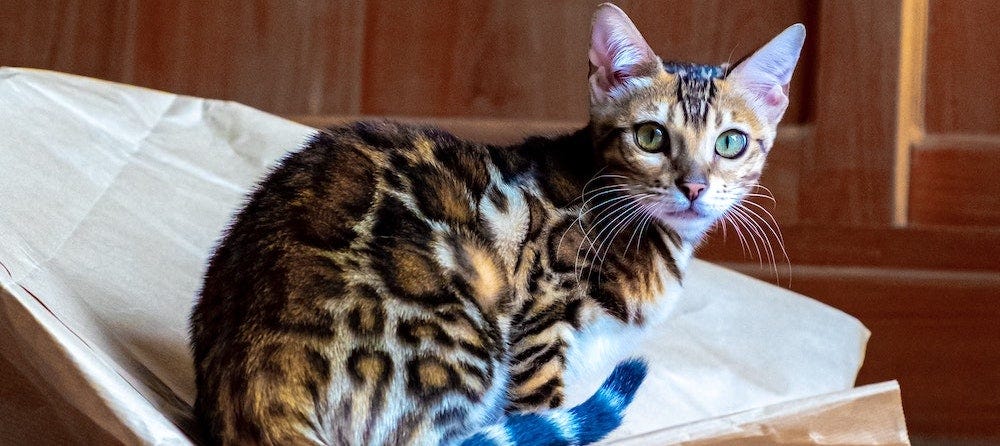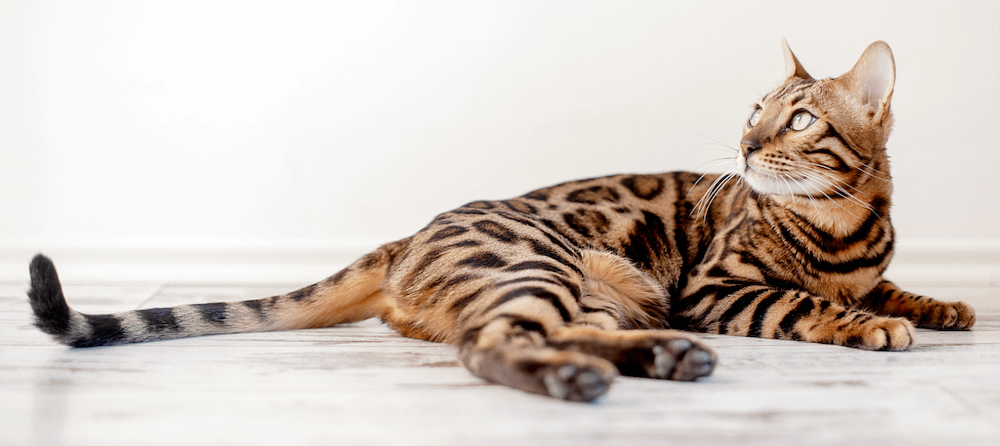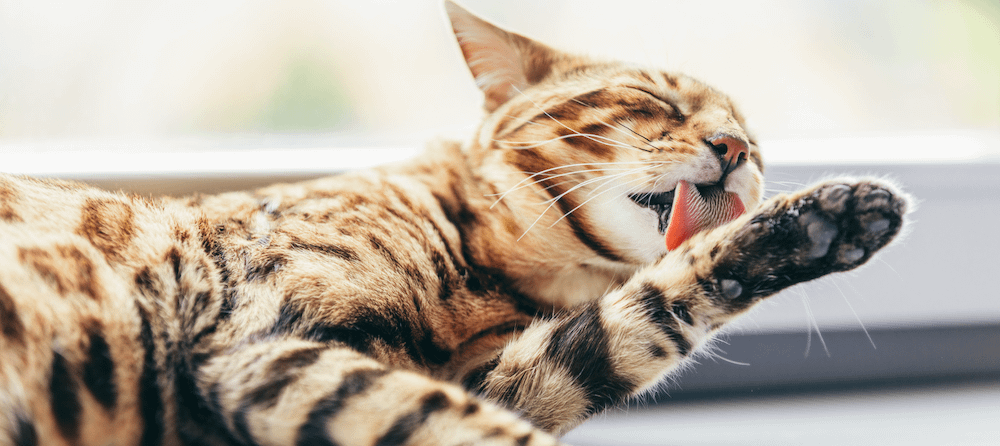This distinctive breed stands out among other domestic cats.
The Bengal cat looks just like a wild cat, yet has an affectionate and dependable personality toward their humans. Bengals have unique, vibrant coloring and patterns that, if caught out of the corner of your eye, might lead you to believe a jungle cat has invaded your home.
Because of their exotic looks, Bengals are a very popular pet and on many cat lovers’ wishlists. These felines are not meant for a rookie, though.
They are extremely intelligent and playful, with high activity levels and a serious need for attention. If you’ve got time on your hands and are looking for a pet that will keep you active and entertained, then the Bengal cat is a great option for you.
Bengals are unique and wild-looking, which gives them a sort of mysticism and appeal. However, they can be a lot of work, so you need to be dedicated to this special breed.
| Bengal cat | ...at a glance |
|---|---|
| Personality | Energetic, affectionate, adventurous |
| Life expectancy | 12-16 years |
| Weight | 8-18 lbs |
| Coat & colors | Short, silky; red-brown or silver-black; spotted or swirled |
| Energy level | High |
| Affection level | High |
| Friendliness | High |
| Shedding level | Medium |
| Required grooming | Low |
Overview of the Bengal cat
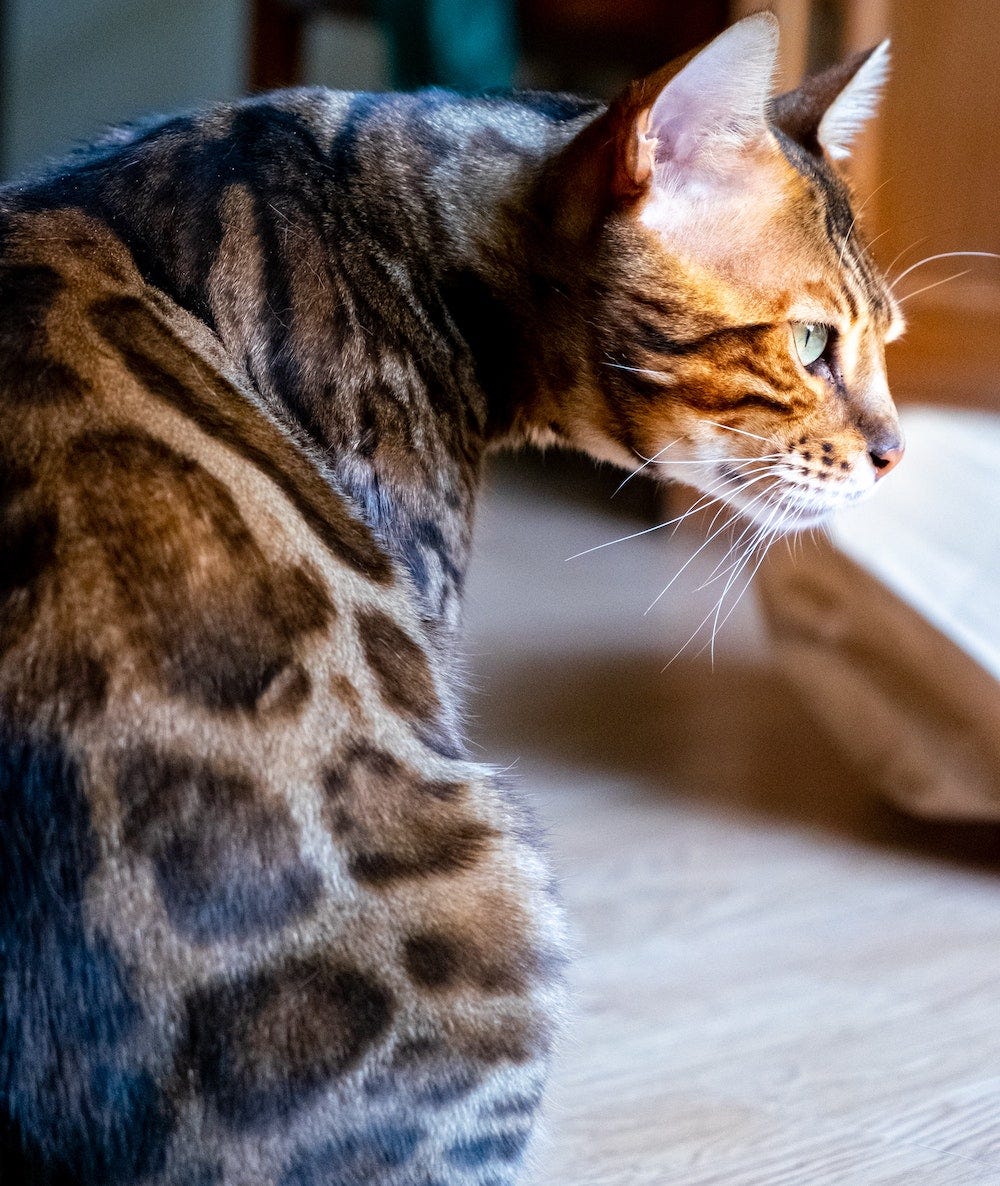
The Bengal cat was created by crossing domestic cat breeds with the Asian leopard cat. This cat stands out with vivid spots and a distinctive marbled coat. The Bengal cat is the only domestic cat that has the same rosette markings as a leopard, jaguar, and ocelot.
This cat is considered a medium to large breed, though they are often lean and muscular. They have powerful bodies and remain active for most of the day. They require a lot of playtime to release some of that pent-up energy.
Weight
The Bengal cat falls on the larger side of the domestic cat breeds, with males typically being larger than females. Depending on nutrition and activity level, weight can easily fluctuate, so it’s crucial to stay on top of your Bengal’s health.
A male Bengal cat will typically weigh anywhere from 10 to 18 pounds (the largest clock in around 22 pounds!), and females weigh around 8 to 12 pounds. Bengals are typically slender, showing their muscles in a sleek fashion.
Length
From the tips of their tails to their noses, most Bengal cats fall between 14 and 18 inches long. They have hind legs that are a bit longer than their front but are at a slanted angle. Though considered a larger breed, they are far from the largest cat breed.
Coat
Bengals' tabby coats are undoubtedly their most striking feature. The Bengal cat has a short to medium-length coat that is quite easy to groom. It’s also extremely silky and soft to the touch. Their rosette markings are noted in a wild big cats.
A Bengal cat can have either spotted or marbled tabby patterns. Spotted Bengals have dark and crisp spots that are highly contrasted against the rest of their fur. Spotted Bengals are the most common and easily identified Bengal cats.
Marbled Bengal cats have horizontally flowing, asymmetrical, random patterns and spots with two or more colors, making them even more distinct than a spotted Bengal.
Life expectancy
Bengal cats can live long, healthy, and happy lives when they are in an environment where they can thrive. Typically, they will live 12 to 16 years, but many surpass this and age gracefully. Proper care makes a big difference in the lifespan of your pet.
History of the Bengal cat
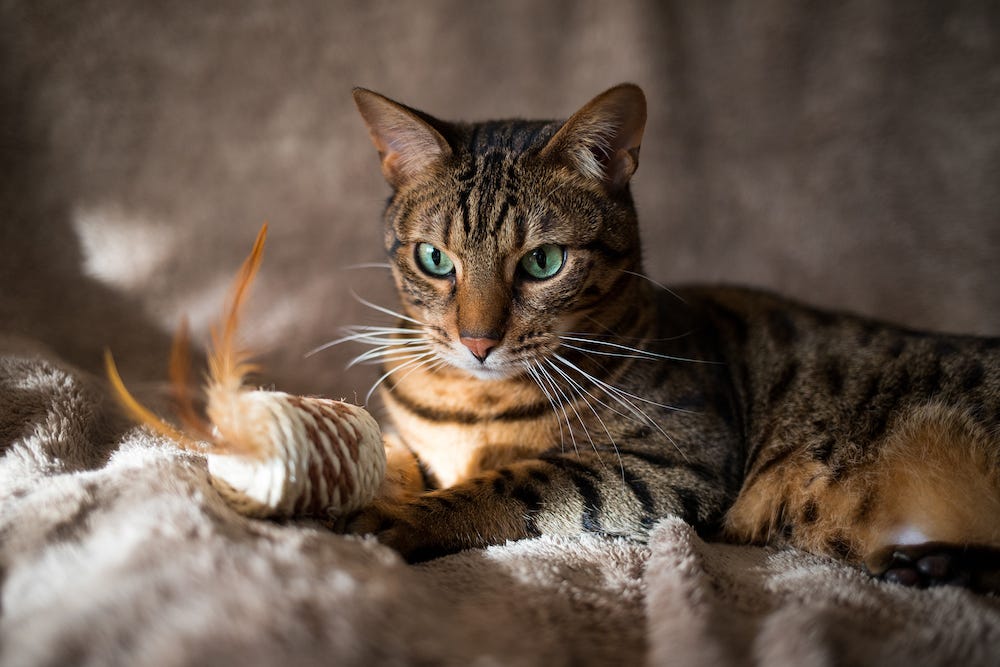
The Bengal cat did not develop naturally. This breed was created when a domestic cat and an Asian leopard mated at the hands of breeder Jean Mill in the 1960s.
At this point, it was still legal to sell Asian leopard cats, and Jean simply wanted a unique pet. She didn't have any ill intentions when purchasing her Asian leopard cat, and after spending some time with the cat, she realized this wild feline was lonely.
Enter a male black domestic cat.
When the male domestic cat and Asian leopard paired up, they were able to mate and have a litter of kittens, to Jean's surprise. Only one survived, and that was KinKin, a female hybrid of her two parents.
KinKin was thought to be sterile, considering the cross-breeding between a domestic and wild cat, but she was then mated with her father and delivered two kittens, one with leopard spots and one all black.
The issue lay in their temperament. These felines were more wild cats than domestic cuddlers. It took four generations until the cats began displaying domestic-like personalities, becoming friendly and docile. Progress was slow because male kittens were born sterile, so the breed relied on females to continue.
Breed status and requirements
By 1985, the world accepted the Bengal cat as a new breed. The only real stipulation is that a Bengal cat must be at least four generations removed from the Asian leopard cat for them to be considered safe pets.
Now Bengals are a highly desired breed thanks to their exotic beauty and friendly manner. You can get the best of both worlds and live out a fantasy of having a “wild” animal.
Keep in mind, there are some restrictions in the United States: This breed is prohibited in New York City, Seattle, Connecticut, and Hawaii. (Check for restrictions and requirements in other states, as well.)
Characteristics
The Bengal cat is a medium to large-sized cat that is extremely muscular. They have oval eyes and alert ears that usually stand up straight.
The Bengal cat is recognized for their coats and exotic appearance. Their coat is thick, sleek, and soft, which feels comforting to stroke while hanging out on the couch at night (or anytime!).
Some Bengal coat color variations include mink, brown tabby, silver-black tabby, and sepia.
Bengals also have a primordial pouch that is more noticeable than in other cats. Leopard cats have a larger primordial pouch that helps them glide through the air in the wild, and when passed down through mating, the pouches on Bengal cats have remained larger than other breeds.
Personality and behavior
It's time to get your paws on some toys for this rambunctious cat.
The Bengal cat is a notably intelligent cat breed. They are active and curious and will get into things when they are intrigued. They like to ascend and survey, so having spots to climb and perch can increase their enjoyment during playtime.
Some Bengal cats even take to a leash, which means going for walks so they can enjoy the outdoors. Not all Bengals will enjoy this, but many Bengal pet parents have attempted it to let their felines get a sense of the outdoors safely.
Bengals are actually very people-oriented. They’re extremely loyal and loving to their human families, wanting to play fetch and interact as they play. They find the most enjoyment when interacting with you, so you might need a lot of extra time on your hands to keep up with their activity needs.
Bengals are also very interested in water and like to play with it if it’s running. They might just pounce into the tub or shower with you!
Caring for a Bengal cat
Bengal cats are highly energetic. They need plenty of attention to keep them busy.
Luckily, their coats are short, so grooming is only needed once every 1-2 weeks. They won’t need baths very often, either. They do a fine job grooming themselves, but brushing them weekly can help keep hairballs to a minimum.
You should also ensure that your Bengal always has a clean litter box available to them—such as a self-cleaning litter box like Litter-Robot—as well as healthy meal portions on a consistent schedule.
Health-related Issues
The Bengal is typically a healthy cat, but you'll want to take them for routine veterinary check-ups and maintain their oral hygiene to avoid gum disease. Bengals are disposed to hypertrophic cardiomyopathy and patellar luxation in the kneecap, which may require surgery. Like dogs, this cat may also develop hip dysplasia.
Bringing home a Bengal kitten or cat
A Bengal cat is a unique pet that deserves proper care. They are so fun to observe, but there’s a lot more to these animals than their looks! They are intelligent and loving creatures that need ample space for activity.
If you are considering a Bengal cat, make sure that you are prepared to give them all they need and more—to ensure they live long and happy lives full of cuddles, playtime, and maybe just a tiny bit of mischief.
Sources:
- Pictures and Facts About Bengal Cats and Kittens | The Spruce Pets
- Leopard Cat | International Society for Endangered Cats (ISEC) Canada
Photo credits
- Jenny Grinblo via Unsplash
- Bodi Raw via Unsplash
- Indyzooms
- Kazuki the Bengal
